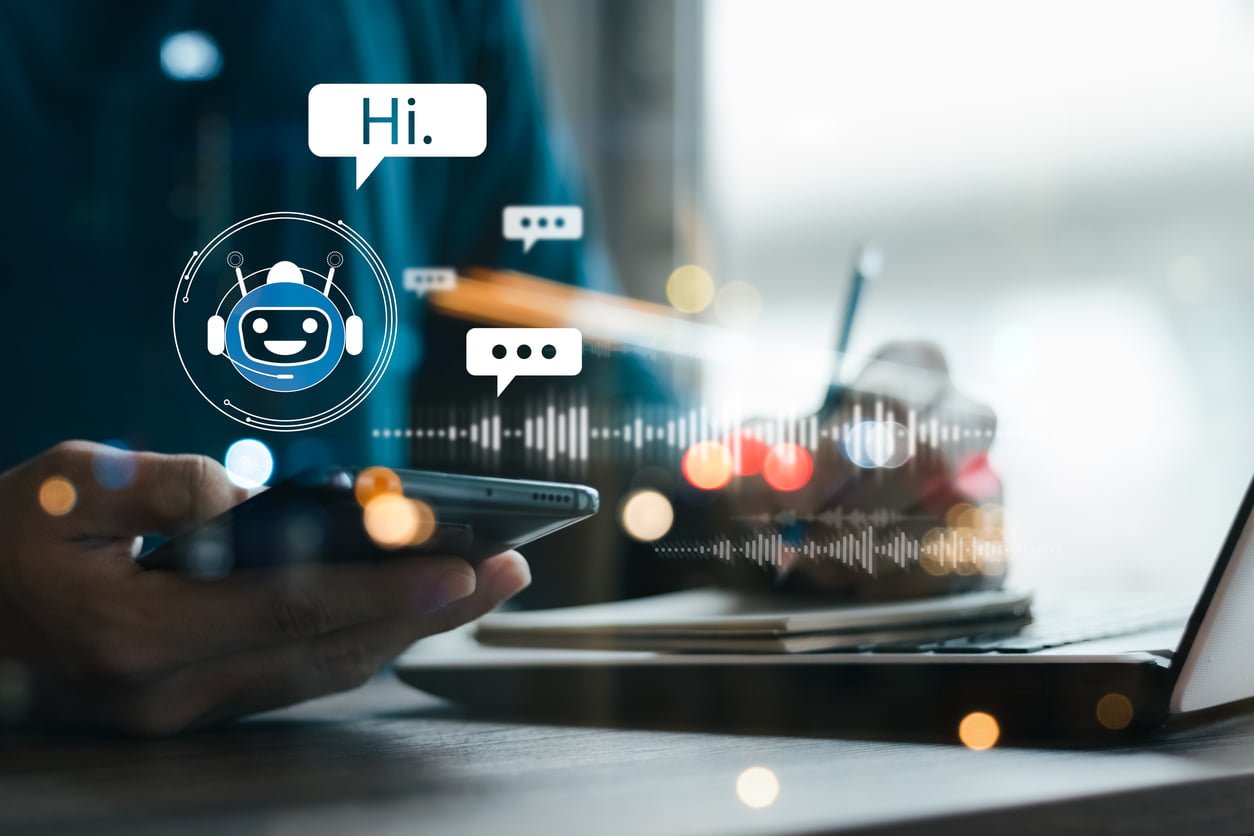Contact centers are essential for businesses to provide customer support and handle inquiries. However, managing a large volume of customer interactions can be challenging, especially if the team is not adequately staffed. This is where chatbots come in. Chatbots, or computer programs that simulate human conversations, can handle a significant portion of customer interactions and free up human agents to focus on more complex or crtical issues.
There are two main types of chatbots: business rule based chatbots and ChatGPT. Business rule based chatbots rely on a set of predefined rules to generate responses, while ChatGPT is a state-of-the-art language model developed by OpenAI that can understand and respond to a wide range of inquiries. In this blog post, we’ll explore the added value of ChatGPT over business rule based chatbots for contact centers.
Added Value #1: Improved Efficiency
One of the main benefits of ChatGPT is its ability to handle a high volume of customer interactions quickly and efficiently. ChatGPT can understand and respond to a wide range of inquiries, freeing up human agents to focus on more complex issues. This can help contact centers improve their overall efficiency and reduce the time it takes to resolve customer issues. In contrast, business rule based chatbots may struggle to handle more complex inquiries and may require additional programming to provide an appropriate response. This can lead to slower response times and reduced efficiency.
Added Value #2: Personalized Interactions
Another advantage of ChatGPT is its ability to provide personalized interactions with customers. ChatGPT can use past conversations and customer information to tailor its responses and provide a more personalized experience. This can help improve customer satisfaction and build loyalty. In contrast, business rule based chatbots may have difficulty providing personalized responses, as they rely on a set of predetermined rules rather than an understanding of the customer’s specific needs or preferences.
Added Value #3: Flexibility
In addition to improving efficiency and providing personalized interactions, ChatGPT is also more flexible than business rule based chatbots. ChatGPT can understand and respond to a wide range of inquiries, making it more adaptable to changing customer needs. This can be especially useful for contact centers that deal with a diverse range of customer inquiries. In contrast, business rule based chatbots may require additional programming to handle new types of inquiries, which can be time-consuming and costly.
Drawbacks
While ChatGPT has many benefits over business rule based chatbots, it’s important to note that it’s not a replacement for human agents. There may be instances where customers require a more personal touch or more complex issues that require the expertise of a human agent. In these cases, it’s important for contact centers to have a mix of both chatbots and human agents to ensure the best possible customer experience.
Implementation Difficulties
Implementing ChatGPT in a contact center may require a significant upfront investment in terms of both time and resources. Training ChatGPT to understand and respond to a wide range of customer inquiries can be a lengthy process, and it may require the involvement of multiple teams, including data scientists and IT professionals. Additionally, ChatGPT may require ongoing maintenance and updates to ensure that it continues to perform effectively.
Conclusion
In conclusion, ChatGPT offers several advantages over business rule based chatbots for contact centers. Its ability to handle a high volume of customer interactions quickly and efficiently, provide personalized interactions, and adapt to changing customer needs makes it a valuable tool for businesses looking to improve.
——————————————————————————————————-
Now, a surprise. Everything that you’ve just read has been written by ChatGPT. We fed it the following utterance:
“Can you write a blog on the added value of ChatGPT over business rule based chatbots for contact centers? I would like to have a blog of seven paragraphs, starting with an introduction on ChatGPT and chatbots, then three paragraphs on the added value and one on the drawbacks. Also one paragraph on the difficulties for implementation. End with a conclusion.”
Our customers asked us what the value of ChatGPT is for their business, and this is what ChatGPT came up with. And although we agree up to a certain point, allow me to extend the answer.
The main breakthrough of ChatGPT is its ability to understand language. The reason ChatGPT outperforms any other chatbot is its ability to understand context and intent. ChatGPT can be trained on all chat and conversational data the company has. The algorithm can learn from the questions customers ask and from the answers the employees give. ChatGPT is able to learn the ins and outs of the company, it is able to learn the context. And it learns more over time, getting smarter and smarter.
The Right Answer?
There are no business rules in ChatGPT, there is no mechanism that ensures that the answer is correct. So how do you know ChatGPT gives the right answer to a customer’s question? Well, the easy answer is: you don’t. A recent Forrester blog post on generative AI, such as ChatGPT warns readers to be on the lookout for “coherent nonsense” – responses that look correct but in fact are not right.
But that doesn’t mean we should put this new technology aside right away. The business rule chatbots that are currently in use are still often wrong as well. We humans have a bias towards mistakes made by systems we can not control. And on the other hand, we downgrade mistakes made by systems we can control, because we can explain the mistakes.
According to the Forrester post, “Enterprises should be excited about experimenting with and integrating generative AI into the workflows of employees — but this excitement should not distract from the need to maintain the transparency and governance that currently exist around content generation processes and AI applications.”
When Can We Use This?
ChatGPT is currently in research preview, it is not ready to be put into production yet. There are a few limitations it needs to overcome before we see broad adoption, including:
- It works well in English, but it’s not quite at the same level with other languages
- Such models are large, meaning it is costly to put into production. For example, it cost $4.6 million dollars to train ChatGPT. The costs of having a trained model in production isn’t made publicly available. As a result, the models need to become smaller to efficiently be put into production.
- We need conversational data to be able to finetune models in order to allow it to learn the specific context of your organization.
- Humans have a negative bias towards systems they can’t control, typically focusing on the mistakes and wrong answers it provides over the benefits.
So to conclude, the future of generative AI looks very exciting, but we’re not entirely there yet. We do know that it proves there is a lot of value and information in your conversations – both customers and employees.
Do you already harvest your conversational data to improve customer interactions and efficiency? QuandaGo specializes in analyzing all your conversations (speech, chat/bot). We harvest information to effectively coach and train your agents and provide you with opportunities for call reduction by analyzing root causes. Reach out today to learn more!






